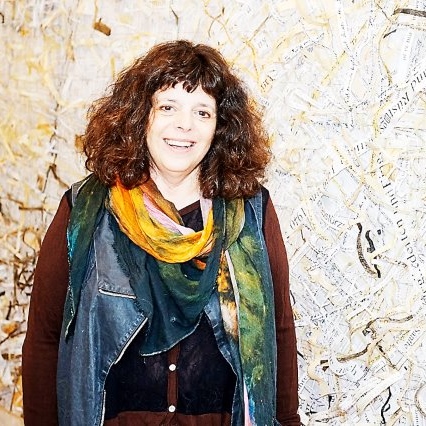click to dowload our latest edition
CLICK HERE TO SUBSCRIBE TO OUR NEWSLETTER


Published
6 years agoon
By
adminNIA MAGOULIANITI-MCGREGOR
It is also the question she has asked herself repeatedly since inheriting 69 precious letters in 2004. They were written by her grandparents Moshe and Beile – who had been killed in the Holocaust – to their son,her father, Benjamin, between 1938 and 1945.
Benjamin was in exile, first in Cuba, then the US, after being arrested and deported by the Gestapo in the spring of 1938.
The letters were written in German, so Frostig saved up the $4 000 needed to have them translated into English. She also filed the letters, which she’d received in a non-descript bag, chronologically. In this way, she circled around them until she was ready to sit down and get to know these grandparents who had been brutally murdered.
She was also introduced to an extended family she never knew existed. They, too, had all been exterminated.
She was well aware of being the daughter of a survivor and a granddaughter of Holocaust victims. It was an inescapable part of her DNA – but the letters brought history to life.
“It was very emotional getting a view of my unknown family. I started to have a relationship with my grandparents that I’d never had in reality. I made art from their two passport photos. Using Photoshop, I made images where I would situate myself within my grandparents’ space. Of course, I was aware I could never truly know them –the art was an effort to create this intermediary, imaginary space. It was a time of yearning and sadness.”
She took a journey to Vienna “in pursuit of them and my family’s history” in 2006, reclaiming her Austrian citizenship in 2007.
“Very quickly it became a pursuit of my relationship to Vienna, the city that had exiled my father, that had murdered my family. I delved into the existence of memory art (artwork inspired by past traumatic events of loss or survival) and was assured Vienna had invested in this area, despite this being a ‘post-memory era (second generation remembering)’.”
Frostig found few Holocaust memorials. “There were three: they were tucked away, ambiguous and inadequate in terms of self-awareness. They never really addressed the issues of murder and genocide which was, obviously, central. I became more intent upon exploring my voice in Austria.”
This was the start of a personal mission that grew into large-scale social action, which became the Vienna Project. After many challenges, including difficulties around raising funding and a tacit philosophy from some Austrian officials of “let the past remain in the past”, The Vienna Project – a temporary public memory project – was launched in 2013.
Engaging with the public, the Vienna Project included performance and installation art, photography and videography, typography and street art, interactive web design, Holocaust education, plus a “naming memorial” project prepared as digitised slides of the names of 91 780 victims.
“Occurring in the public space, the project joined history with memory, and collaboration with participation,” says Frostig. The Vienna Project was dedicated to remembering all victim groups, including Jewish, Roma and Sinti victims, the mentally ill, physically disabled and homosexual victims, as well as communists, dissidents, socialists, Slovenian partisans, and Jehovah’s Witnesses.
She says it enabled the public “to engage in collective acts of remembrance”.
“I had broken through a kind of silence. I was allowed to do a closing at the national library at the Hofberg, one of the most prominent locations in the city. And then it was over. If you weren’t there you missed it. So, In the middle of it all, I started to think maybe temporary isn’t sufficient.”
To that end, Frostig has started to make designs for a small memorial naming installation and returns to Vienna in February to gauge synergy between her ideas and a planned House of History museum.
“I’m headed in a few directions. One is writing a book that has to do with my family’s history, and the projects I’ve worked on.
“And the other is, if Austria is not interested in a naming installation – the country has voted in a very right-wing government – I have a lot of artwork I’ve made in regard to my family’s history and these projects. I could adapt this, using the 16 members of my family who were murdered and create a smaller installation that also still encompasses the multiple groups and the larger numbers.”
Connecting it to South Africa, Frostig says the message of the Vienna Project is that memory has got to be tied with accountability. “There is still ambivalence around this in Austria whereas in South Africa there really has been a deeper commitment to look at the history.”
